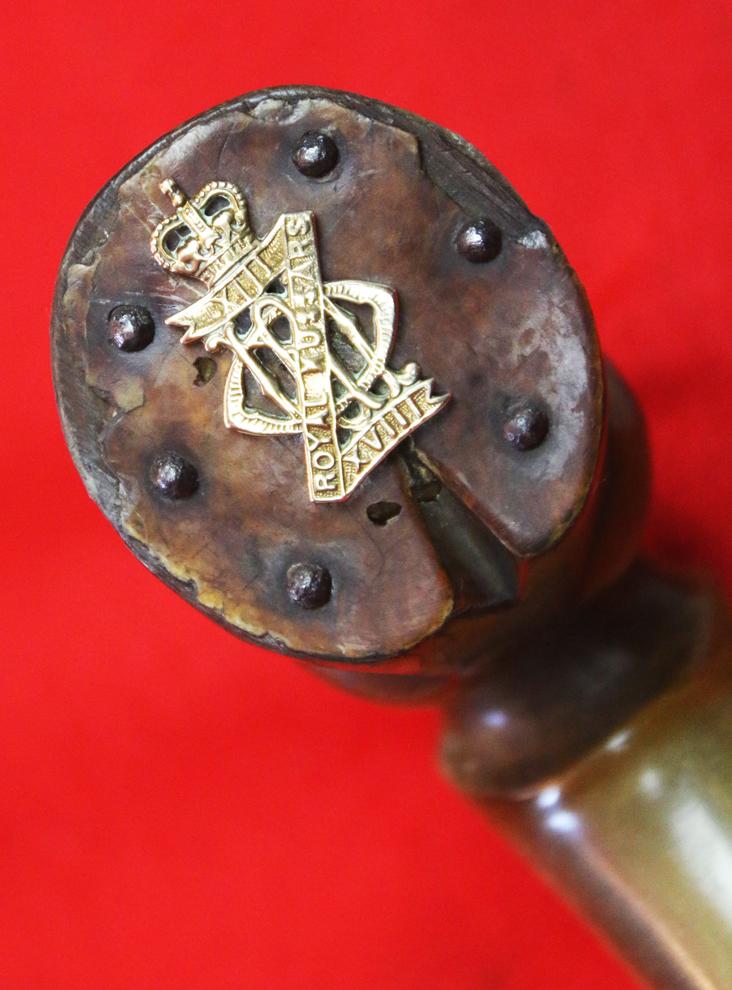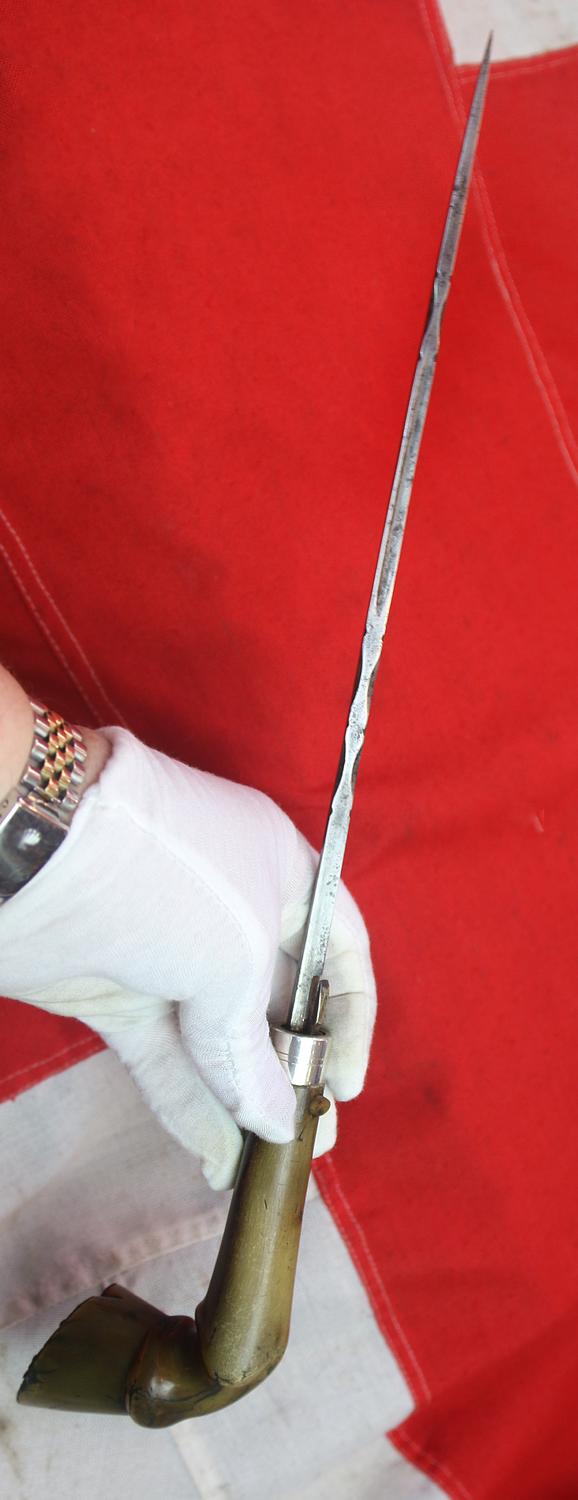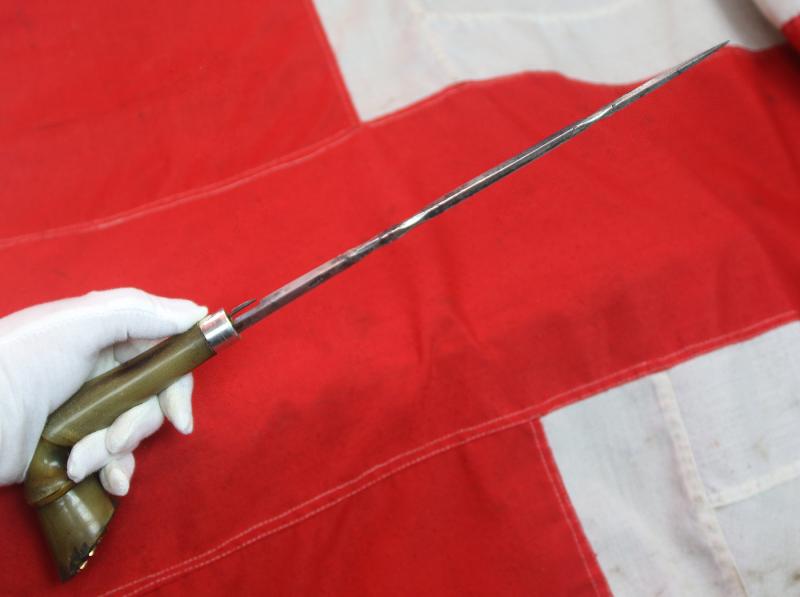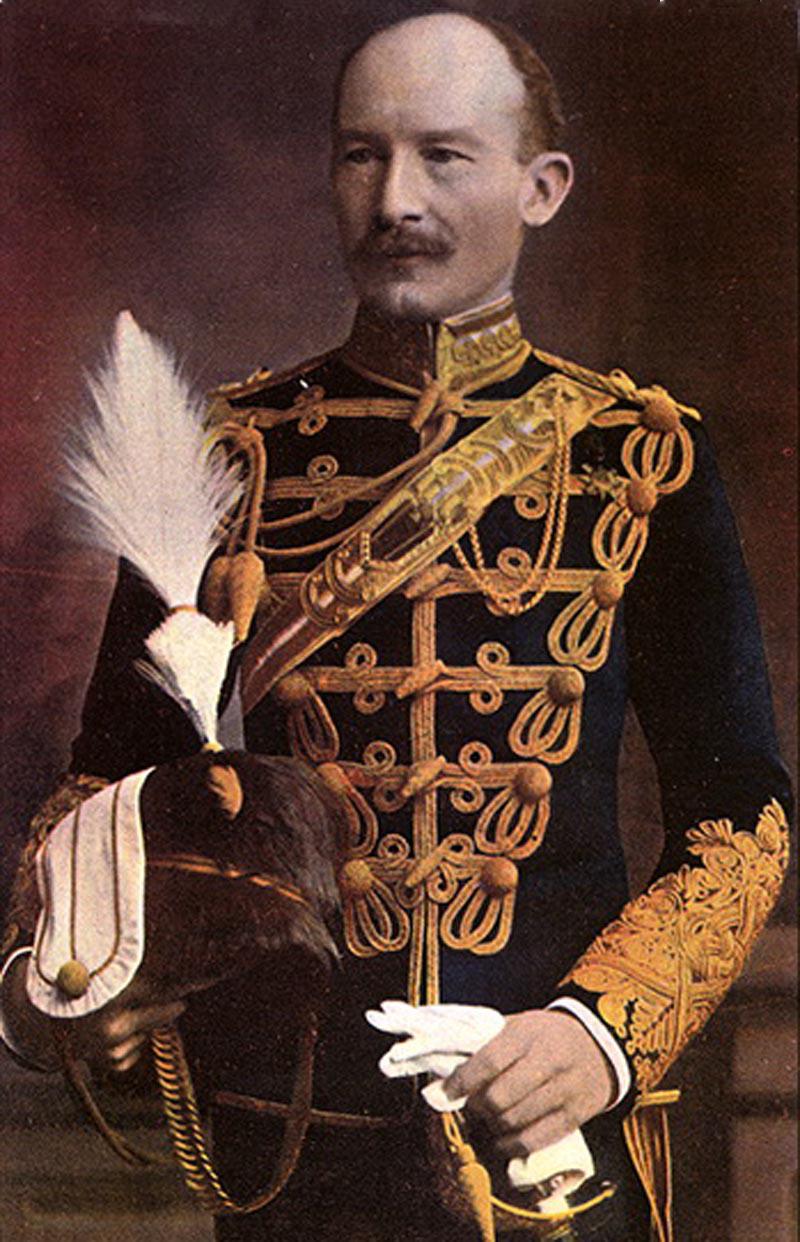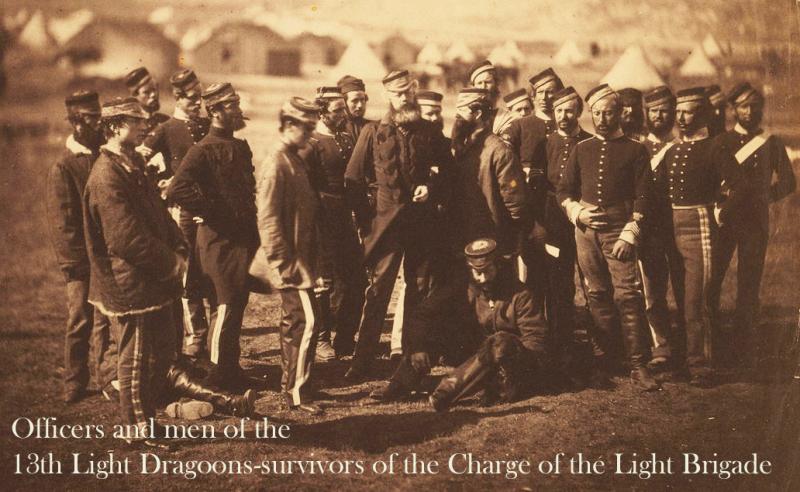A Most Fine and Attractive Victorian Officer’s and Gentleman’s Dagger-Stick of a British Hussars Officer of The Regiment of The +'Charge of the Light Brigade' Fame
An equestrian, hussars based dagger- cane bearing a symbolic horse hoof handle in carved horn, bearing the gold regimental badge of the XIIIth Hussar regiment within which this sword’s owner was serving, or once served. The stick also has silver inlay depicting two opposing rows of horse shoes Colonel Baden-Powell was the regiments colonel who later went on to form the Boy Scouts.
The stilletto blade is beautifully chisselled with scalloping and also with a pair of opposing fullers, and stamped by the London maker. A maker to the royal family, of umbrellas walking canes, and before the war, sword canes
The regiment saw action, as part of the light brigade under the command of Major General the Earl of Cardigan, at the Battle of Alma in September 1854. The regiment was in the first line of cavalry on the right flank during the Charge of the Light Brigade at the Battle of Balaclava in October 1854. The brigade drove through the Russian artillery before smashing straight into the Russian cavalry and pushing them back; it was unable to consolidate its position, however, having insufficient forces and had to withdraw to its starting position, coming under further attack as it did so. The regiment lost three officers and 38 men in the debacle. Lance-Sergeant Joseph Malone of the E Troop was awarded the Victoria Cross for his actions during the battle. The regiment also took part in the Battle of Inkerman in November 1854: the regiment played a minor role, although Captain Jenyns complained:
'They put us under a very heavy fire at Inkerman, but luckily for us - and no thanks to any General - we had a slight rise on our flank, which ricocheted the balls just over our heads. Some ship's shells bowled over a few men and horses though. It was useless, as we could not act.'
13th Hussars
The regiment went on to take part in the Siege of Sevastopol in winter 1854. On 8 April 1861 the regiment was renamed the 13th Hussars and in April 1862 the regiment started wearing hussar clothing. The regiment departed for Canada in September 1866 as part of the response to the Fenian raids and sailed for India in January 1874. Robert Baden-Powell, the future leader of the scouts, joined the regiment in India in 1876. The regiment served in Afghanistan but saw no action during the Second Anglo-Afghan War.
One photo in the gallery show the Officers and men of the 13th Light Dragoons-survivors of the 'Charge of the Light Brigade' taken by by Roger Fenton in 1855. It is perfectly possible this dagger stick may have once been owned by one of these men.
Lord Byron's was a most another famous exponent of the use and carrying of the gentleman’s walk-about sword stick. His was exhibited in King's College London, bearing a mercurial gilt collar bearing his name, coronet and adopted surname Noel.
Sword canes became more popular as the streets became less safe. Society dictated it mandatory that gentlemen of the 18th and especially 19th centuries would wear a cane when out and about, and it was common for the well-dressed gentleman to own and sport canes in a variety of styles, including a good and sound sword cane. Although Byron was proficient in the use of pistols, his lameness and his need to defend himself in some potentially dangerous situations made a swordstick doubly useful to him. He received lessons in London from the fencing master Henry Angelo and owned a number of swordsticks, some of which were supplied by his boxing instructor Gentleman John Jackson.
On Byron’s sword cane was the name NOEL BYRON, upon the ferrule of his one indicated that it was used after 1822, when Byron added the surname Noel after the death of his mother-in-law.
There are several references to sword sticks in the correspondence of Byron and his circle. Byron wrote to Hobhouse from Switzerland on 23 June 1816 asking him to Bring with you also for me some bottles of Calcined Magnesia a new Sword cane procured by Jackson he alone knows the sort (my last tumbled into this lake ) some of Waite's red tooth-powder & tooth-brushes a Taylor's Pawrsanias Pausanias and I forget the other things. Hobhouse responded on 9 July: Your commissions shall be punctually fulfilled whether as to muniments for the mind or body pistol brushes, cundums, potash Prafsanias Pausanias tooth powder and sword stick.
In the entry for 22 September 1816 in Byron's Alpine Journal he describes how, at the foot of the Jungfrau,
"Storm came on , thunder, lightning, hail, all in perfection and beautiful, I was on horseback the Guide wanted to carry my cane I was going to give it him when I recollected it was a Sword stick and I thought that the lightning might be attracted towards him kept it myself a good deal encumbered with it & my cloak as it was too heavy for a whip and the horse was stupid & stood still every other peal."
In a letter to Maria Gisborne of 6-10 April 1822, Mary Shelley described the "Pisan affray" of 24 March, in which Sergeant-Major Masi was pitch-forked by one of Byron's servants. She recounted how Byron rode to his own house, and got a sword stick from one of his servants.
The gilt badge on the hoof shows the later crest of the regiment, that merged with the XVIIIth Hussars just after WW1. It shows that once, in its place, was the earlier style regimental badge, before it merged, but it was likely replaced to show its later badge for its later likely descendant owner of the ‘Charge Man’ sometime after the war.
Code: 24864
1200.00 GBP



